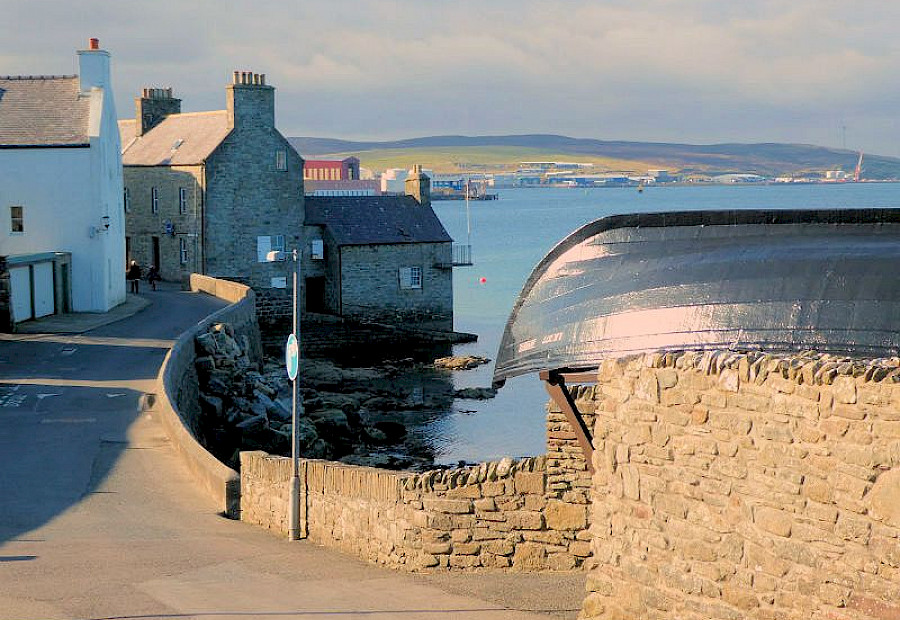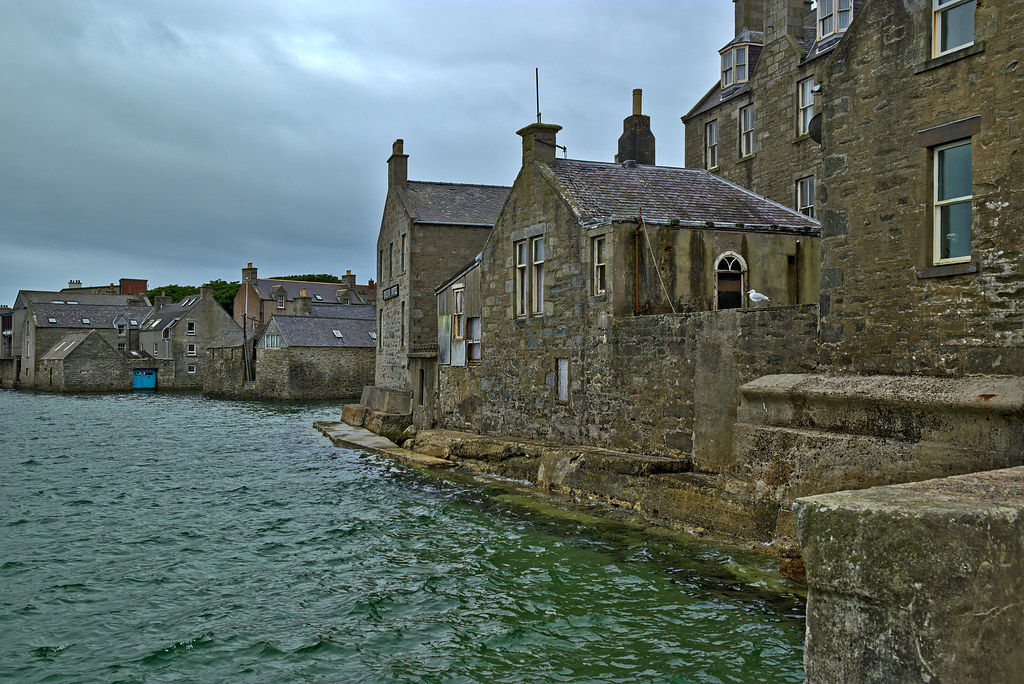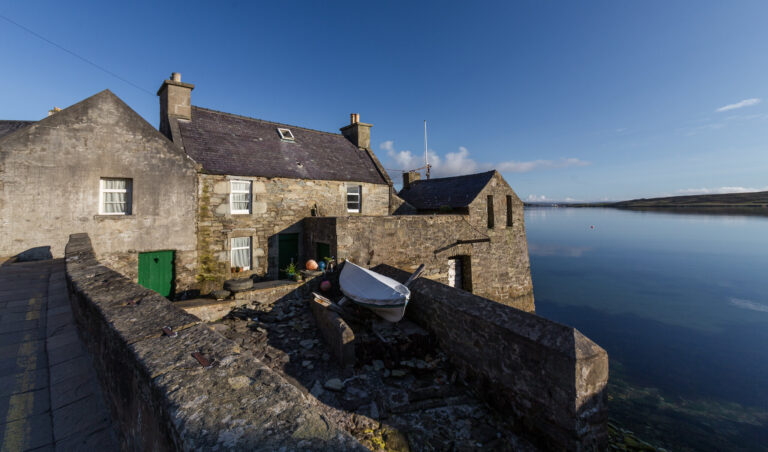Experts have been confused for years as to why trees are so rare in Shetland, which caused inquiries into the geological, environmental, and historical causes that have contributed to the severe lack of tree growth.
Moreover, The Shetland Islands, a picturesque archipelago located in the North Atlantic Ocean, are renowned for their breathtaking landscapes and unique natural environment. However, one striking aspect that often captures the attention of visitors and researchers alike is the noticeable absence of extensive tree cover across the area.
Here, you will get to know the interesting factors but also the future Prospects of the islands. Let’s get explore it.
Geological Factors

Geological History of the Shetland Islands:
Glacial activity has shaped the geological history of the Shetland Islands, leaving behind deep valleys, steep hills, and rocky outcrops. As a result, trees’ development was impacted by a variety of soil types, including shallow and nutrient-poor ones.
Soil Composition and Terrain Influence on Tree Growth:
The dirt is too thin, too shallow, and deficient in nutrients for strong trees growing here. Due to nutritional deficits and rough surfaces, Also, the uneven topography and insufficient depth of land make it difficult to establish themselves and restrict their ability to flourish.
Lack of Suitable Habitats for Tree Establishment:
The features, including rocky outcrops and undulating terrain, limit tree establishment opportunities. They require well-drained soil, water, and wind protection, making them lack extensive woodlands and forests in regions with more favorable conditions.
Climatic Conditions:
Harsh and Windy Climate:
The challenging climate of the Shetland Islands, with strong breezes and cool temperatures, hamper growth and affect their health, making it hard for trees to thrive.
Limitation by Strong Winds and Salt Spray:
The islands’ strong breezes stop tree advancement, inflicting physical damage and impeding nutrient uptake. Furthermore, A blustery atmosphere makes it difficult for trees to grow and establish themselves.
Impact of Cold Temperatures and Short-Growing Seasons:
When compared to warm places, the Northern Islands’ mild temperatures and short growing seasons disrupt trees’ capacity to carry out effective photosynthesis, limit growth potential, and inhibit reproduction.
Historical Context
Historical Land Use Practices:
agriculture, grazing, peat cutting, and conservation efforts, have had a significant impact on the landscape and vegetation patterns over the centuries.
Role of Human Activities in Tree Absence:
Human activities such as deforestation and extensive grazing have had a notable impact on the lack of trees on Shetland. Early settlers likely cleared areas for agricultural purposes, removing potential habitats for growth.
Over time, continuous grazing by livestock prevented natural regeneration, as young saplings were frequently eaten or damaged. This combination of deforestation and intense grazing further limited the opportunities for trees to establish themselves.
Shaping of Current Vegetation Patterns:
The absence of significant tree cover has led to the dominance of other types of vegetation, like heather, grasses, and mosses. These plants are better suited to challenging conditions, including strong winds and shallow soils.
Also, the development of extensive peat bogs is a consequence of both historical and ongoing peat-cutting practices. According to the soggy environment, these bogs further restrict the types of habitats that can be produced.
Conservation and Future Implications:
Modern conservation efforts have recognized the importance of preserving and restoring the unique ecosystem of the Islands. Initiatives aimed at controlling grazing, rewilding, and reforestation have been undertaken to reverse some of the historical impacts. Yet, these efforts are complex, as they must balance ecological restoration with the realities of the ‘ history and contemporary land use needs.
Ecological Relationships:
Interdependence of Species:
with species evolving to coexist and depend on each other for survival. The absence of trees has been a key factor shaping these relationships, fostering unique adaptations among plants and animals.
Adaptations Due to Tree Absence:
Many plants have evolved to flourish in exposed conditions, adjusting low-growth forms to withstand strong winds. Similarly, animals have developed unique behaviors to survive without the shelter of forests. Birds cleverly nest in low vegetation or cliffs, making up for the lack of suitable tree habitats.
Additionally, burrowing animals seek refuge in the ground, finding respite from the harsh weather. These remarkable adaptations showcase the resilience and resourcefulness of life on the Islands.
Importance of Heather, Grasses, and Peat Bogs:
Because of the shortage of trees on the Islands, heather, grasses, and peat bogs have survived, becoming important components of the ecology. Therefore, Heather provides cover for birds and pollinators, whilst grasses maintain the soil and give feed. Peat bogs save water and store carbon.
Balance in the Ecosystem:
While the absence of trees has led to unique variations, the overall balance of the ecosystem remains delicate. Each species, whether plant or animal, has found its niche in the absence of forests. Altering this balance, for example through reforestation efforts, can have complex ecological implications, affecting everything from soil composition to water flow patterns.
Conservation Efforts:
Ongoing Tree Reintroduction Initiatives:
Reforestation initiatives in the Islands aim to restore the ecosystem by reintroducing carefully selected species to address historical tree absence and challenging environmental conditions.
Challenges and Considerations:
Reintroducing trees to the Islands faces challenges due to the harsh climate, shallowlands, and grazing by livestock. The next step Careful planning and community engagement are essential to balance reforestation with other land uses.
Potential Benefits of Increasing Tree Cover:
Increasing cover on the Islands offers benefits especially, wildlife habitat improvement, soil stabilization, carbon sequestration for climate change mitigation, and enhanced aesthetic and recreational value, also benefiting local economies through ecotourism.
Future Prospects:
Climate change presents potential shifts in tree cover dynamics on the Shetland Islands, introducing complexities to their ecosystem. Warmer temperatures could extend the growing season, enabling successful tree establishment but disturbing the existing balance. In addition, changing temperatures may favor new species while posing challenges for those adapted to cooler conditions.
Furthermore, increased storm frequency and intensity due to climate change might impede growth and survival. Particularly, The stronger winds and salt spray could limit establishment. While predictions vary, these trends highlight the need for adaptive strategies to cope with climate-induced alterations in the islands’ tree cover.
In the end, Monitoring and adjusting tree reintroduction efforts in response to these potential changes will be crucial to ensure the long-term success of conservation initiatives in the face of a changing climate.
Technological Interventions for Tree Establishment:

1. Windbreaks and Barriers: Developing windbreaks or artificial barriers can offer protection to young trees, shielding them from harsh breezes and salt exposure.
2. Soil Improvement: Techniques to improve soil structure and nutrient content can help young trees establish better root systems, enhancing their chances of survival.
3. Species Selection: Researching and selecting good species that are better adapted to the changing climate can improve the success rate of tree establishment.
Comparison with Other Regions:
1. Coastal Climates:
Strong gusts and exposure to salt pose problems for development in coastal areas with similar climates. In some places, though, tree growth is supported. In fact, they may grow behind protective barriers like sand dunes in coastal settings where there are protections from the elements.
2. Alpine Environments:
equally, High-altitude alpine environments can be as challenging for advancement as the Islands. Yet, some alpine regions have managed to support tree life.in these regions are often stunted and twisted, production close to the ground to avoid the worst effects of wind and cold. The slow growth and unique forms of alpine trees are adaptations to extreme conditions.
3. Urban Landscapes:
By providing artificial shelter from buildings and infrastructure, certain urban areas with similar conditions have been able to produce a canopy of trees. Similarly, urban planning that considers wind patterns and microclimates can produce more favorable conditions for tree progress.
FAQ
Can trees grow on the Shetland Islands?
Although Shetland is known for having a “treeless” environment, the islands’ need for trees is increasing. With the aid of a £9,500 Scottish Forestry grant, the tree nursery run by the Shetland Amenity Trust in Lerwick is increasing its output in response to the growing interest in planting.
Did Shetland have forests?
Although Shetland is not generally recognized for its woods, the isles do include a large number of plantations and wooded areas.
Was Shetland once forested?
Approximately 5,000 years ago, Shetland and the Western Isles were covered with woodland. This was followed by a decrease in woodland cover, mostly as a result of early cultivation. At least half of our native woodland had disappeared by the time the Roman soldiers of Agricola conquered Scotland in AD 82.
Why is Shetland famous?
The stunning natural scenery of Shetland is one of the most remarkable in the world, sculpted by shifting sand and sea over billions of years. It’s also brimming with natural life. There are many of opportunities to see Shetland’s wild residents, from puffins and orcas to the well-known Shetland ponies and dolphins
Conclusion
The lack of trees on the Shetland Islands is a consequence of geological, climatic, historical, and ecological factors. They can advance in the future by completing Soil Improvement, Windbreaks, and Barriers, as well as excellent Species Selection.

